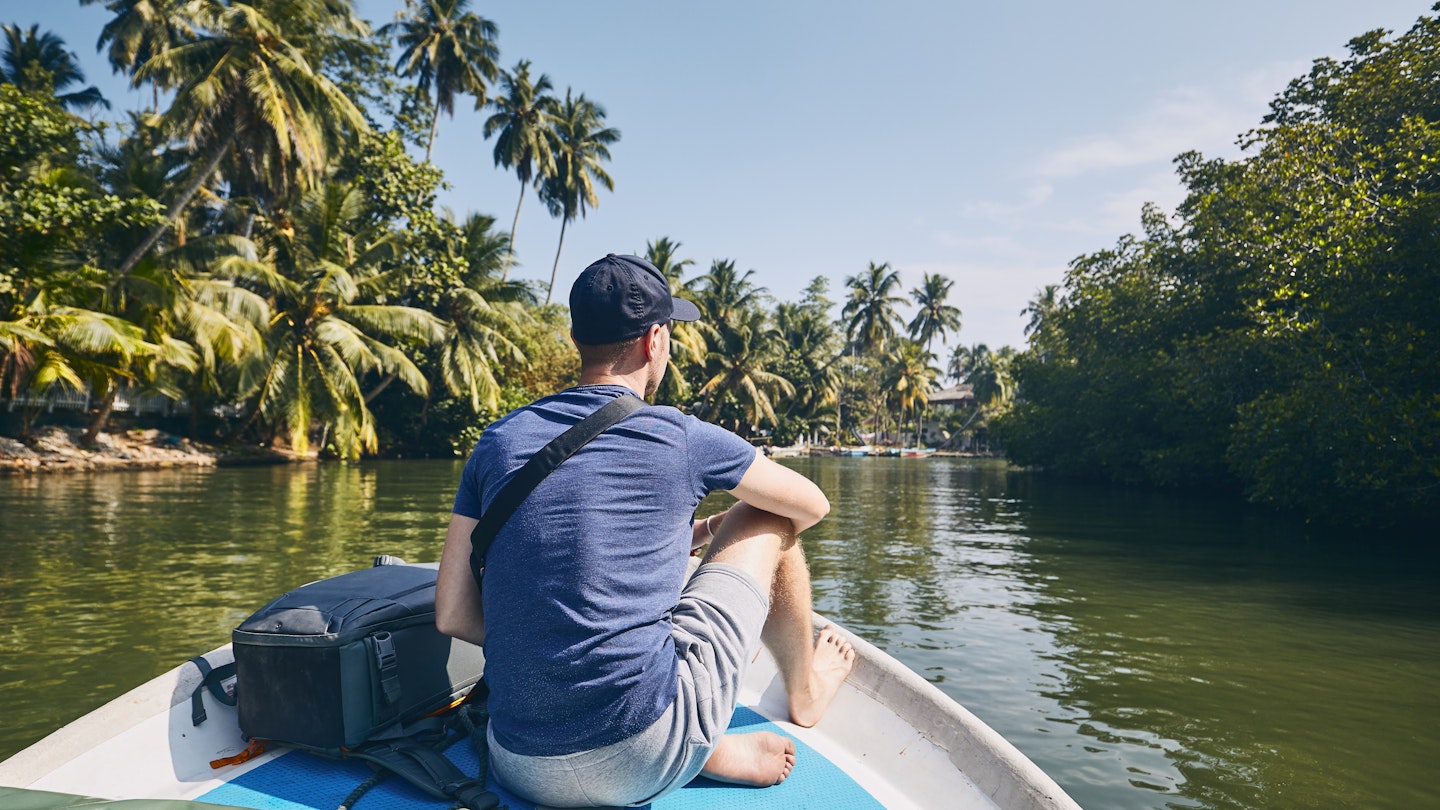Exploring the Madu River in Sri Lanka
As I journey along the enchanting waters of the Madu River in Sri Lanka, local boatman Manis highlights the brilliantly colored birdlife perched in the trees. The banks are adorned with lush foliage, including banana, cinnamon, and balsa trees, with polka-dotted branches bearing poisonous lime-green fruit. I gaze upward to see a hawk seemingly frozen in mid-air.
Discover the Madu River
As we navigate the river, we encounter only a handful of other boats: fishermen balancing expertly on narrow canoes and a few small tourist boats filled with eager photographers. While Sri Lanka conjures images of elephants, rock temples, and beautiful beaches, it is surprising to find that these inland waters hold some of the country’s most cherished secrets.
The Madu River, located in the south, is an expansive and serene waterway, marking the second largest wetland in Sri Lanka. In contrast, the largest wetland is further north, known as the Muthurajawela Marsh, translating to “Swamp of Royal Treasure.” Muthurajawela spans over 30 sq km and offers boat tours across its stunning Negombo Lagoon. In comparison, the Madu marsh, a remarkable sanctuary teeming with biodiversity and nourished by seven tributaries, covers approximately one-third of that area, featuring around 30 islands that support vibrant communities.

As I continue to observe the surroundings, vibrant waterlilies stretch from the banks, showcasing flowers in hot pink and lemon-gold hues. Various bird species, such as black cormorants and water hens, add to the lively atmosphere. This area boasts thick mangrove forests, with hidden channels where boats can seamlessly glide. As we navigate into one such channel, everyone instinctively ducks to avoid the low-hanging branches. Elsewhere, palms lean gracefully into the water, with agile monkeys swinging from branch to branch. The riverbanks are alive with indigenous wildlife, including leisurely monitor lizards, green imperial pigeons, and yellow-billed babblers.

Eventually, we arrive at a sizable island named for its prominent crop: cinnamon. We disembark and seek shelter under large umbrellas as heavy raindrops from the late monsoon start to pelt the boat’s canopy. We find refuge in a quaint shack on a promontory, where Manis serves us tea infused with freshly ground cinnamon. Shortly thereafter, an islander arrives to demonstrate the cinnamon collection process, expertly peeling back the bark from a branch with a sharp knife. With the warm air surrounding us, we sip our soothing tea beneath a waterproof roof crafted from coconut palm leaves, surrounded by rows of drying cinnamon.
Once the rain subsides, we board the boat and continue our river journey. Almost instantly, I spot another monkey, this time leaping joyfully from a papaya tree, a baby clinging to its back. We pass by Madu Island, where Manis shares that the island houses several hundred homes, a school, and a bank—but no vehicles, not even a tuk-tuk. The river then opens up to a grand lagoon, encircled by jungle, and as dusk descends, we approach a shrine situated on an islet, dedicated to Ganesh. Fishermen frequent this site to pay their respects to the revered elephant god.
My boat journey spans three hours, yet I find myself yearning for more. Navigating the rivers of Sri Lanka is an extraordinary means to witness the country’s abundant wildlife, including vibrant birds, playful monkeys, and graceful butterflies, as well as the slow-moving monitor lizards. Additionally, this is a pleasant reminder of the pleasures of slow travel and presents an unheralded opportunity to discover this stunning island nation.
Additional River Adventures
In addition to the mesmerizing Madu River tour, you can explore Sri Lanka’s largest marsh and lagoon systems through various boat trips departing from Negombo and Bentota. Many local hotels and companies offer these experiences. Experience Travel Group also provides tours in the east, inclusive of visits to local villages, sharing meals with families, and traditional fishing boat rides along the expansive 31km-long Unnichchai Tank. To the north, enjoy early morning boat rides on a lakeside at the base of Pidurangala, complemented by remarkable views of the famous rocks and a delightful breakfast at a charming campsite.
Houseboat Experiences
Just under a kilometer from Lunuganga and 3.5km from Bentota Lake, the Yathra Houseboat by Jetwing presents a picturesque bamboo-framed vessel, shaded by coconut palms, featuring outdoor terraces with stunning river views. Guests can embark on a five-hour cruise before enjoying an overnight stay. Similarly, Flow by the Amber Collection offers houseboat accommodation in Piliyandala, with scenic cruising on Bolgoda, Sri Lanka’s largest freshwater lake, located less than an hour east of Colombo. These boats, designed to resemble traditional Sri Lankan houses (walauwas), showcase large windows and luxurious, boutique-style rooms.

Engaging in Water Activities
Thrilling rafting adventures await on the Kelani River, offering both gentle meanders and heart-pounding whitewater rapids. For those keen on water sports, Action Sri Lanka specializes in local offerings. Tangalle is an ideal locale for kayaking; explore the biodiverse Rekawa and Mawella lagoons, the latter featuring a bat cave and heron island. The premier birdwatching experience in Sri Lanka can be found at the Kalametiya Bird Sanctuary, where lagoon tours by boat are also available. Along the northwest coast, approximately 120km north of Colombo, lies Kalpitiya, home to a coastal lagoon sanctuary that hosts a diverse range of birdlife and Sri Lanka’s last remaining pink dolphins, best spotted from November to March. On the east coast in Arugam Bay, one of the least developed areas in Sri Lanka, kayaking on Pottuvil lagoon allows for serene wandering with potential elephant sightings along the banks. Numerous local tour operators are available, so don’t hesitate to seek their recommendations.
Abigail Blasi traveled to Sri Lanka with the support of Asia Leisure Ltd and Experience Travel Group. iBestTravel contributors do not accept freebies in exchange for positive coverage.




